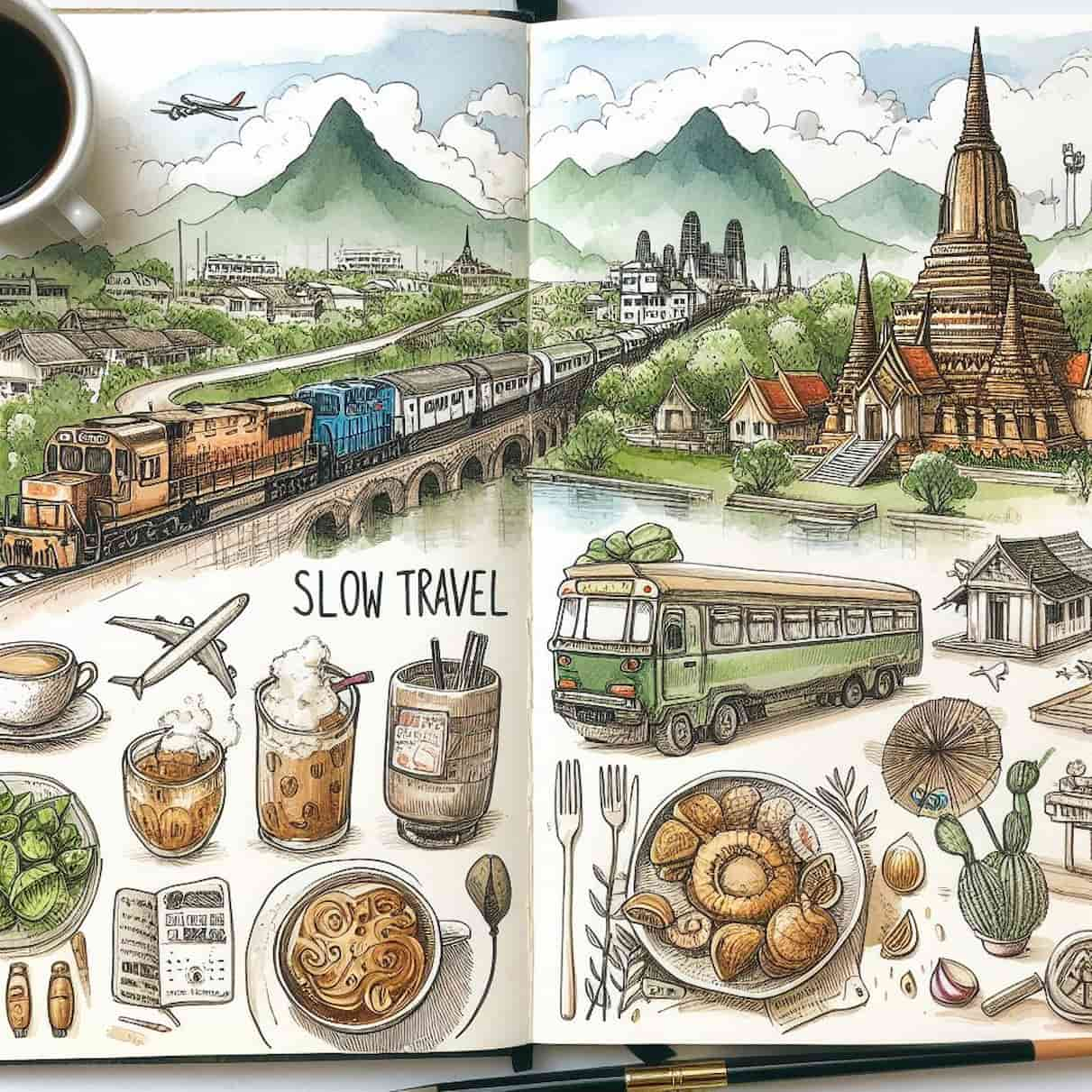Slow travel is a mindset and lifestyle choice that prioritizes depth over speed, mindfulness over haste, and meaningful experiences over ticking off tourist attractions. It encourages travelers to immerse themselves fully in the local culture, savoring each moment rather than rushing from one destination to another. In essence, it’s about the journey being as important as the destination.
Key Takeaways:
- Slow travel focuses on immersing oneself fully in the local culture and environment.
- It emphasizes quality over quantity, depth over speed, and meaningful experiences over ticking off tourist attractions.
- Slow travel encourages sustainability, mindfulness, and a deeper connection with the places visited.
What is Slow Travel?
Slow travel is more about the journey itself than the destination. It’s about taking the time to appreciate the nuances of a place, to connect with locals, and to delve into the rhythm of daily life. Unlike traditional tourism, which often involves rushing from one landmark to another, slow travel encourages travelers to spend more time in fewer locations, allowing for a deeper exploration and a richer experience.
Characteristics of Slow Travel:
| Characteristics | Description |
|---|---|
| Mindfulness | Being present in the moment, fully engaging with the surroundings, and appreciating the small details. |
| Sustainability | Minimizing the environmental impact of travel and supporting local communities and economies. |
| Flexibility | Embracing spontaneity and allowing for detours, unexpected discoveries, and serendipitous experiences. |
| Connection | Building meaningful connections with locals, immersing oneself in the local culture, and respecting local customs and traditions. |
Embracing Slow Travel:
To embrace slow travel, one can start by:
- Choosing destinations carefully: Opt for places that resonate with your interests and values rather than following popular tourist trails.
- Planning less, experiencing more: Leave room for spontaneity and serendipity in your itinerary.
- Traveling sustainably: Minimize your environmental impact by using eco-friendly modes of transportation and supporting local businesses.
- Connecting with locals: Engage with the community through cultural activities, volunteering, or homestays to gain a deeper understanding of the destination.
Sustainable Traveling:
Sustainable traveling involves making conscious choices to minimize the negative impacts of tourism on the environment, society, and economy. This includes reducing carbon emissions, supporting local businesses, respecting local cultures, and conserving natural resources.
Slow Travel Mindset:
The slow travel mindset is characterized by patience, mindfulness, and a willingness to embrace the unknown. It involves letting go of rigid schedules and expectations, and instead, being open to new experiences and perspectives.
Benefits of Slow Tourism:
| Benefits | Description |
|---|---|
| Deeper cultural immersion | By spending more time in one place, travelers can develop a deeper understanding of the local culture and way of life. |
| Reduced environmental impact | Slow travel often involves using sustainable modes of transportation and supporting eco-friendly initiatives. |
| Enhanced well-being | Slowing down and being present in the moment can lead to reduced stress levels and increased overall well-being. |
Sustainable Tourism in 2024:
In 2024, the slow travel trend continues to gain momentum as travelers seek more meaningful and authentic experiences. With a growing awareness of environmental issues and a desire for deeper connections, sustainable tourism practices are becoming increasingly popular. Travelers are choosing destinations and accommodations that prioritize sustainability and are seeking out experiences that allow them to immerse themselves fully in the local culture.
In conclusion, slow travel offers a refreshing alternative to the fast-paced, checklist-driven approach of traditional tourism. By embracing mindfulness, sustainability, and a deeper connection with the places we visit, we can enrich our travel experiences and leave a positive impact on the world around us. So, why rush? Take the scenic route, savor the moments, and let the journey unfold at its own pace.












